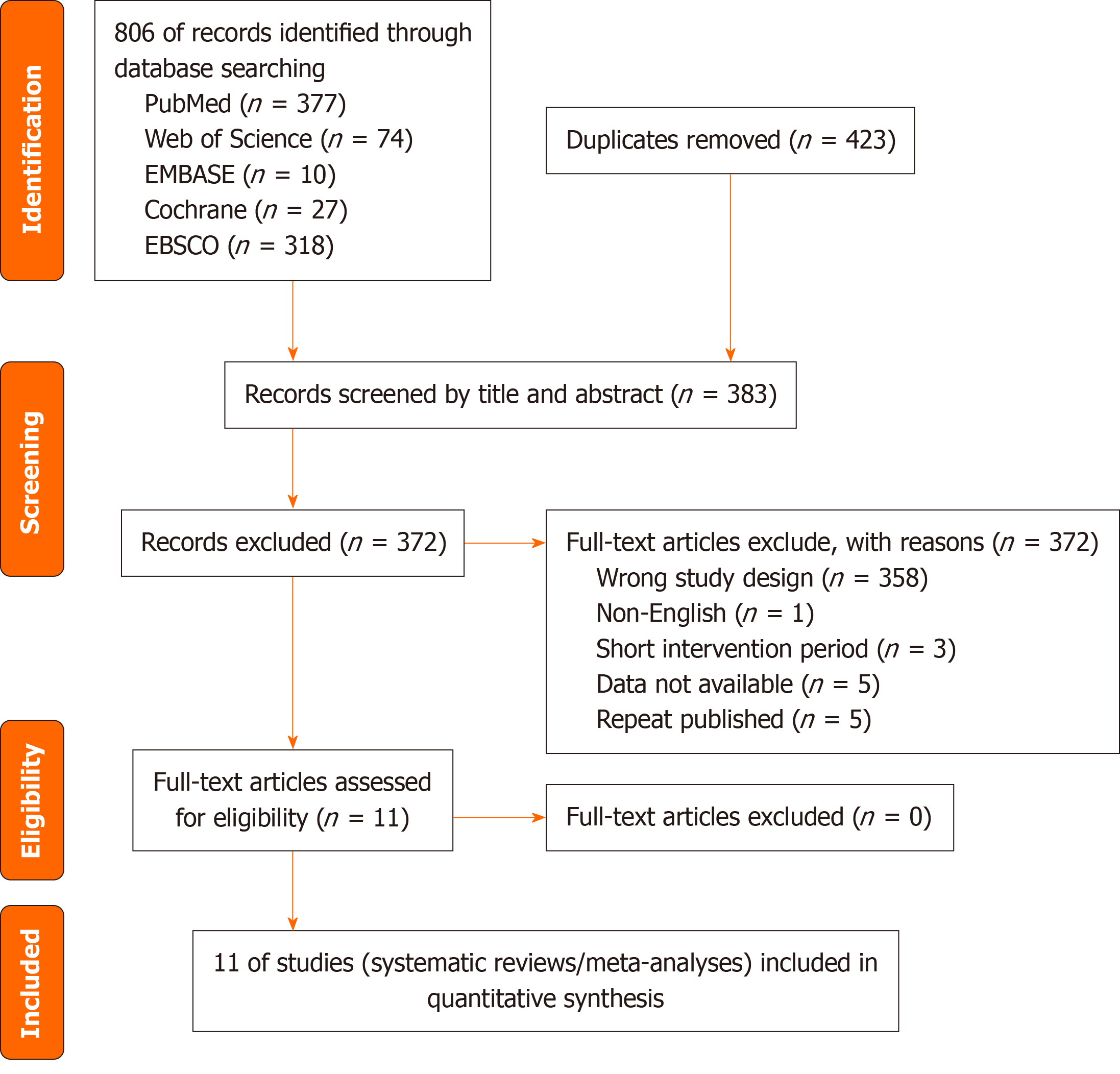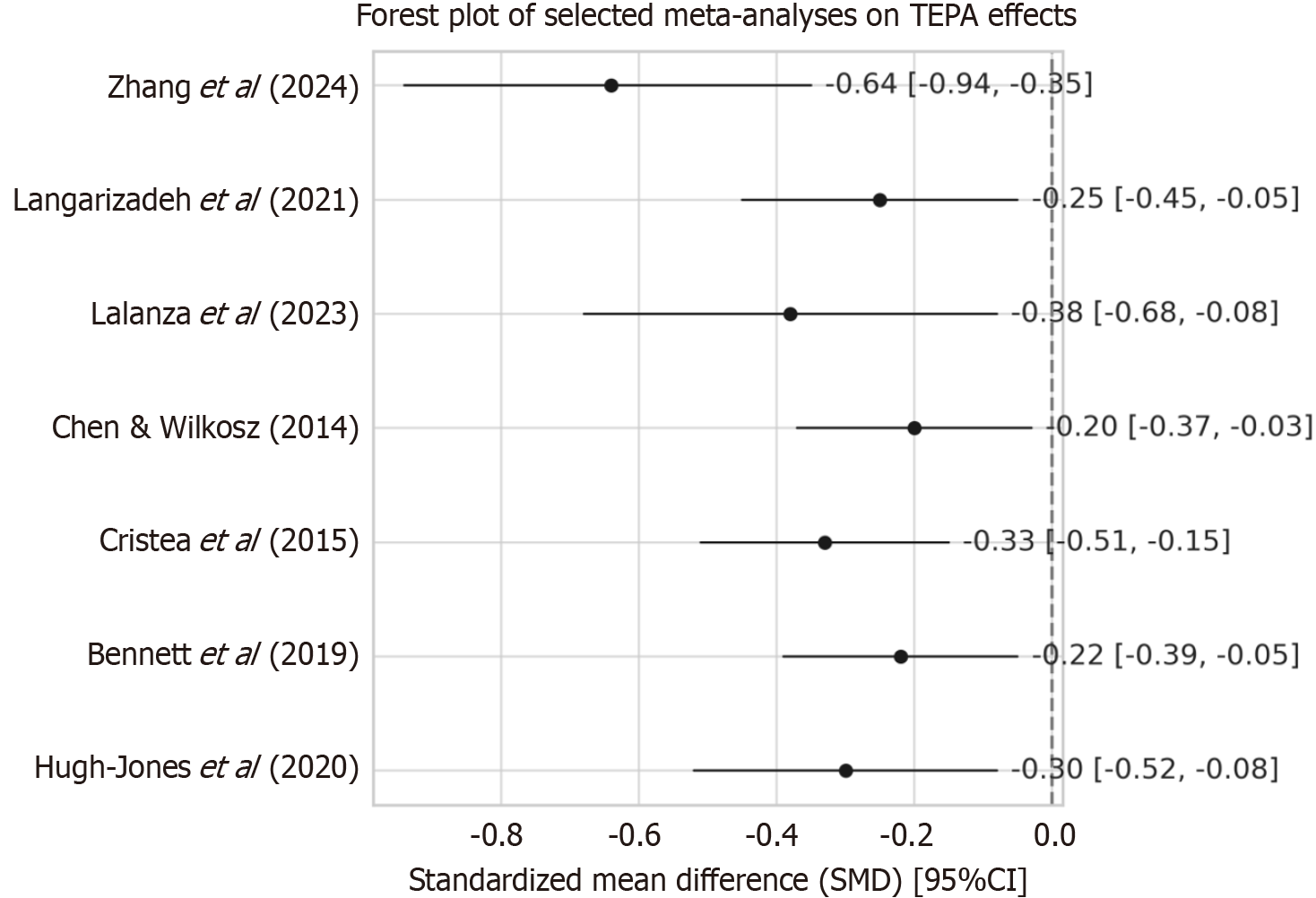Copyright
©The Author(s) 2025.
World J Psychiatry. Sep 19, 2025; 15(9): 108847
Published online Sep 19, 2025. doi: 10.5498/wjp.v15.i9.108847
Published online Sep 19, 2025. doi: 10.5498/wjp.v15.i9.108847
Figure 1 Preferred Reporting Items for Systematic Reviews and Meta-Analyses flowchart of reviews identified, screened, removed, and included in the review.
Figure 2 A Measurement Tool to Assess Systematic Reviews-2 overall rating heatmap across included reviews.
This heatmap visualizes the overall methodological quality of the included systematic reviews and meta-analyses, as assessed using the A Measurement Tool to Assess Systematic Reviews 2 tool. Ratings are presented numerically (0–3) and qualitatively (high, moderate) for each study. Purple indicates high confidence, orange indicates moderate confidence, and gradients represent intermediate levels. Studies rated as “moderate” formed the majority of the included reviews. AMSTAR: A Measurement Tool to Assess Systematic Reviews.
Figure 3 Forest plot of standardized mean differences with 95%CI.
This forest plot presents pooled effect sizes (SMDs) and 95%CI for selected meta-analytic reviews examining the impact of technology-enhanced physical activity interventions on mental or cognitive health outcomes in youth. The vertical red dashed line indicates the null effect line (SMD = 0). Negative SMD values represent beneficial effects in reducing symptoms or enhancing outcomes compared to controls. TEPA: Technology-enhanced physical activity.
- Citation: Wang ZQ, Hong SY, Jia ZX, Zhang Y, Ma SS, Bu XG, Wang WJ. Effects of technology-enhanced physical activity on brain and mental health in youth: An umbrella review of meta-analyses. World J Psychiatry 2025; 15(9): 108847
- URL: https://www.wjgnet.com/2220-3206/full/v15/i9/108847.htm
- DOI: https://dx.doi.org/10.5498/wjp.v15.i9.108847











